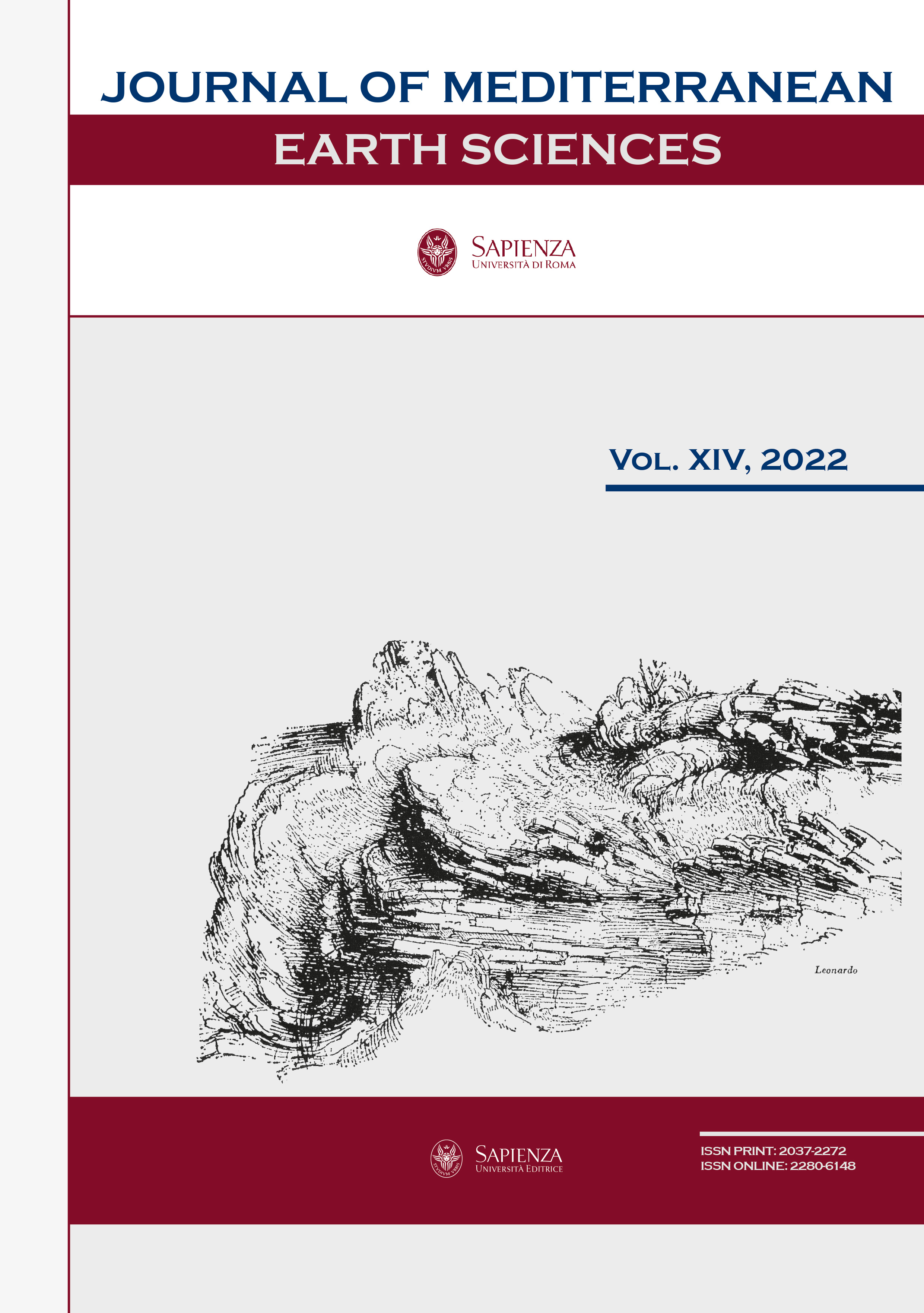Stepwise tectono-sedimentary evolution of Meso-Cenozoic Pre-Apulian carbonate units of the Ionian Islands (External Hellenides, Greece)
DOI:
https://doi.org/10.13133/2280-6148/17835Abstract
The tectono-sedimentary evolution of Meso-Cenozoic Pre-Apulian carbonate successions of the Ionian Islands has been investigated through a comparison of the outcropping sedimentary sequences. These sequences are the remnants of originally wide shallow water depositional units belonging to different Cretaceous-Paleogene sedimentary systems developed in a crustal segment positioned between the Apulian Carbonate Platform (ACP) and the Ionian Basin (IB). The evolutionary trends of the facies sequences highlight the existence of at least two depositional systems, one, including western Cephalonia and Zakynthos islands, linked to the ACP domain, and the other, including eastern Cephalonia and Lefkada islands, linked to the IB domain. These two areas were affected during the Mesozoic and Cenozoic by different phases of geotectonic deformation and sinking times. Down-faulting with backstepping of marginal areas, often accompanied by periods of emergences of blocks, caused repeated sediment mobilizations by mass flows. Detrital carbonates dispersed and accumulated along the sloping seafloor, proximal to newly formed basin areas, not necessarily directly connected eastward with the basin areas of the IB. The western unit, Lixouri Peninsula, and Zakynthos island were part of, for a long time acted as a subsiding flat-topped rimmed carbonate platform. In Upper Cretaceous times this unit underwent a progressive marginal down-faulting that led to the development of a Paleocene ramp system with variable geometries related to the evolutionary trend of the eastern margin of the ACP. The eastern unit, including the part of Cephalonia east of the Enos thrust and part of Lefkada island, shows, at least since early Cretaceous, close relationships with the pelagic sedimentation of the IB. The existence of a depositional system of carbonate ramp along the western margin of this deep water environment is testified since Hauterivian time by the presence of resedimented shelf-derived fine calcidebrites interbedded with pelagic lime mudstone.
The changes undergone by the depositional systems are to be related to the progressive disappearance of Mesozoic Neo-Tethys large infra-oceanic carbonate platforms mainly due to the series of tectono-sedimentary phases that during the time led to the demise of shallow water sedimentation on large areas, to the storage in deepwater of rudist-bearing detrital carbonate transported by mass-flow phenomena, and finally to the spread of fine pelagic sedimentation throughout former shallow water areas. By this, only the Upper Cretaceous portion of the stratigraphic record of the Pre-Apulian zone related to the ACP domain can be attributed to a typical isolated flat-topped rimmed carbonate platform model.
Downloads
Published
How to Cite
Issue
Section
License
The submission has not been previously published, nor is it before another journal for consideration (or an explanation has been provided in Comments to the Editor).


